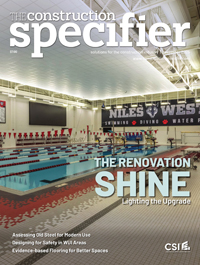Transforming construction with ultra-high-performance concrete
Specifying UHPC
An important work product from the first stage was developing a draft guide specification that can be used if an owner wants to specify UHPC precast concrete. The language can be used for either a building or transportation project. In addition to the specification for UHPC materials qualification and acceptance, the team created design guidelines with detailed design examples.
The next steps involve testing large-scale members.
“These lab assessments are simply to validate our design recommendations and to refine them if required. We already know UHPC works; we are just trying to reinforce that it is cost-competitive,” said Tadros.
After that, technology transfer is vital to disseminate the information to the public. Like every industry, forward-thinking businesses will embrace the opportunity. The form and equipment supply companies are also vital to advance this effort.
“New forms for the shapes and cross sections created by structural engineers such as myself are needed to cast products for the same span and load that use only half of the concrete. This is not just adjusting mixes, it is high-level engineering,” Tadros said.
Changing mindsets
When PCI and its members champion UHPC in the United States, there will be a groundswell of excitement about the future.
“In the interim, I envision a building products producer will still utilize ‘regular’ concrete to cast the myriad components for a variety of projects,” said Force. “It might take two separate and distinct batching procedures and equipment. That is not insurmountable, given what we have learned to this point.”
“Civil engineers are conservative by nature and reluctant to take risks with new technologic advances because the consequences are significant. However, there are those who are ready to push the envelope, and in 10 years I hope to see significant market penetration,” said Lawler.
“There still needs to be market education and transformation. To change the mindset of the design community that the common 9- x 9-m (30- x 30-ft) grid is obsolete and adopt an 18- x 18-m (60- x 60-ft) layout is a huge paradigm shift,” said Force.
In addition to precast concrete producers who believe in UHPC, “we also need owners and developers willing to build with it and consulting engineers willing to design with it,” said Tadros. “All of these components have to pull together to achieve successful commercialization. That is our challenge going forward.”
Conclusion
As it will likely be used in transportation and building applications, UHPC’s impact on construction will be profound. Owners, project managers, architects, and engineers will benefit from its many advantages: higher strength, cost-competitiveness, thinner and lighter-weight components, and durability.









